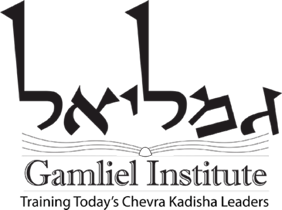Educational Approaches
Value Orientation
Rabbi Joshua Elkin gives us a framework for education that is based on Jewish values rather than on events in the Jewish life cycle. (For the full article from which this quote comes, click here.) His approach is based on seven principles, which
… are in effect rationales for the observances. Some practices originated over two thousand years ago in very different societies and circumstances and for reasons often having little, if anything, in common with our seven principles. Popular superstitions were certainly operative with a phenomenon such as death. The Jewish heritage has evolved and developed over the centuries through a healthy and dynamic interaction with surrounding cultures and religions. The willingness and ability of Jewish ancestors to incorporate and reinterpret rituals from different groups has added a tremendous vitality to the Jewish tradition. We must, indeed, be cognizant of historical roots; however, at the same time, we must not fall victim to historical reductionism or genetic fallacy.
While both the practices and their rationales have undergone a substantial evolution, we hasten to emphasize the amazing continuity, particularly in practice, from the middle Rabbinic period right through the Middle Ages when the definitive codes of Jewish observances were compiled. A Jewish way in death and mourning has remained fairly crystallized for centuries within the many Jewish communities around the world.
The following seven principles are deeply embedded within the Jewish way; they will provide the framework for the presentation of traditional material …
- Respect for the Dead
- The Reality of Death and Its Acceptance
- Equality and Simplicity
- Communal Responsibility and Support
- The Venting of Emotions
- The Affirmation of Life
- Remembrance
By presenting the Jewish rituals and practices at the end of life through the lenses of these seven principles, we can better and more easily understand not only the place of these aspects of Jewish life, but also how they fit into the larger picture. Rabbi Elkin’s approach makes death education more approachable and more personal, as the values represented are deeply rooted in Jewish life in general.
Thus, structuring educational programs for adults and youth around these principles can facilitate involvement of many elements of the community. And, the seven principles give an easy orientation for educational program aspects.
Educational Orientation
For educators and organizers, it is important to recognize that much of the critical core knowledge that we use, (information on Jewish traditions around death and mourning) is structured for, and directed to, individuals. This first focus usually emphasizes the chronology of death and mourning practices, the emotional journey of the bereaved, and an explanation of the underlying Jewish principles that shape our death and mourning practice. For many Jews Rabbi Maurice Lamm’s book is a comfortable entry point for learning basic concepts of Jewish traditions and practices. His classic work, The Jewish Way in Death and Mourning, provides the chronological steps of the Jewish tradition in a succinct, authoritative explanation. These are presented as a series of stages from sickness to death, from preparation of the body to burial, from comforting the family to mourning.
The emotional journey of the chronological Jewish approach to death practices is exemplified by Rabbi Anne Brener’s book, Mourning and Mitzvah. Through readings, explanations of Hebrew root words, and journaling she walks the mourner through the emotions that they may be experiencing as they confront the process of grief. Another approach to understanding the emotional path of the mourner is through Rabbi Me’irah Iliinsky’s book, Mapping the Journey: The Mourner & The Soul. Rabbi Me’irah’s painting visually portrays both the mourner and the soul of the deceased during the period immediately following death. It is a powerful and encompassing journey to behold.
A different orientation found in writings on death and mourning explains Jewish practices from a societal point of view. These works include historical reviews of communal customs and practices, critiques of current practices, and models for reclaiming the traditional Jewish response to death and bringing it back under the control of the synagogue and Jewish community. These can form the basis for sound educational programs. Drawing on our practices and traditions and a fundamental understanding of the grief process, we can examine the critical turning points in the history and evolution of the Chevrah Kadisha in order to focus on the issues of communal responsibility around death and mourning.
The resources for such an educational focus include stellar authors and works that discuss the history of Chevrah Kadisha development:
- Sylvie Goldberg, in her book, Crossing the Jabbok, (University of California Press – 1997) describes the Prague Chevrah Kadisha’s origin and charter.
- Rabbi Jacob Rader Marcus delineates the evolution of the German Chevrah Kadisha societies of the early 19th century in his book Communal Sick-care in the German Ghetto (Ktav Publishing – 1978).
- The chapter entitled The Scandal of the Jewish Funeral, in his book, The Jew in American Life (Crown Publishers – 1963), by Rabbi Samuel Dresner, was an early attempt to reverse Western traditions that infiltrated and significantly altered Jewish ritual practices, especially where funeral homes had supplanted the traditional role of the Chevrah Kadisha. For a time, embalming, fancy caskets and viewing were the norm. Dresner’s indictment of these practices was loud and clear.
- Similar in approach to Dresner, is the 1963 publication of Jessica Mitford’s book, The American Way of Death, and her newer version, The American Way of Death Revisited, an expose of bad practices in the funeral business.
- Rabbi Arnold Goodman’s 1981 book, A Plain Pine Box (Ktav Publishing House – 2003), which grew out of a 1975 organizing efforts and the 1980 television documentary about his work, had a significant impact on the Chevrah Kadisha movement. Built on the critiques of Mitford and Dresner, the book describes how one Conservative shul in Minneapolis challenged the status quo by taking control of the rituals around death, and thereby creating a shining example for other communities.
- David Wachtel, et al in the 120 page book published in conjunction with the exhibition of the same name – From This World to the Next (Library of the Jewish Theological Seminary – 1999) – analyzes nine centuries of the evolution of the Chevrah Kadisha and death and mourning traditions using rare books and artifacts.
Intra- and Inter- Synagogue Programs
When it comes to education, sharing resources can be a blessing for all concerned. Some synagogues prefer to hold their own educational events to teach about end of life. Others would prefer to include everyone in the community at multi-synagogue, community-wide events in which several rabbis or teachers educate about Jewish end of life practices and rituals for the benefit of members of all of those synagogues, along with the unaffiliated Jews who are part of the larger community.
There are benefits to both approaches. Certainly a mix of both of these approaches gains the best of both worlds. Including end of life rituals in each synagogue’s life cycle education curriculum and having one or two community-wide events each year in which the larger community can discuss and share and learn about the richness and beauty of Jewish death rituals, can provide a thorough basis for both adults and children to gain exposure to and in-depth learning about our practices.
Topics can be presented as overview lectures, more hands-on discussion and interaction classes, or several hour in-depth trainings. Generally, communities want overviews of most of the above with in-depth training in taharah-related topics. We will tailor the format and content to meet the needs of your community. Here is a common full weekend arrangement:
- Friday night and/or Saturday morning drash tying into that week’s Torah or Haftorah portion – an introduction to the spiritual and emotional aspects of taharah and shmirah to provide inspiration and general information
- Example: Spiritual Uplift – an exploration of the spiritual aspects of Jewish death practices and how they impact us
- Shabbat learning after a meal (lunch and learn), usually based on a Torah portion or Talmud selection, exploring Jewish traditional practices around death; equality and leadership; or providing comfort
- Example: Jewish text study –Rabban Gamliel’s impact on Jewish death practices then and now
- After Havdallah, taharah text study or an evening consultation with chevrah leaders and/or clergy
- o Example: next steps, ongoing training and educational programs
- Example: studying kavanah, sources, and power of taharah liturgy
- Sunday morning adult education or religious school teaching
- Example: Jewish traditions for Bar/Bat Mitzvah age; providing comfort for younger children; or other appropriate topics
- Sunday all-day or afternoon in-depth training
- Example: taharah demo including steps in performing taharah, tachrichim dressing demonstration, and an extensive question and answer session
- Discussion of complicated situations, health and safety in the taharah room, chevrah management and recruitment, and other related topics
- Monday morning funeral home “back of the house” tour and analysis, assessing taharah and shmirah spaces and facilities available for Chevrah Kadisha use
In addition to the above more formal educational programs, to begin the conversation about death and its related practices, there are many approaches that have proven to be very effective. These include the conversation starters:
- Death Café
- Death Dinner Party
- Death Over Dinner
- Five Wishes
- Go Wish Cards
- Kavod Conversation
Another approach to synagogue-based education that intimately includes all synagogues, is to arrange a series of talks, one at each synagogue, each presented by the local rabbi along with a knowledgeable person from the Chevrah Kadisha. The rabbi gives a short drash on Jewish death practices in general, and then the chevrah leader presents the beauty and sanctity of the work of the chevrah within the context of the larger picture set up by the rabbi. This is followed by a question/answer session and discussion.
These kinds of programs could also include movie showings, book readings, and other formats that also enable conversations and discussions to open the door to facing mortality.
An example of a community-wide event that is very effective is to hold a “panel of rabbis” discussion on Jewish end of life practices. It’s an event in which there is a panel moderator, several rabbis from the community (perhaps one from each synagogue, or one from each denomination), in which the moderator poses questions related to Jewish practice, and each panel member answers. This is followed by a question/answer session and discussion. This is also a good opportunity to sell books about Jewish end of life practice, inform attendees of services available at local funeral homes, and share advertisements about upcoming educational programs available to the community.

